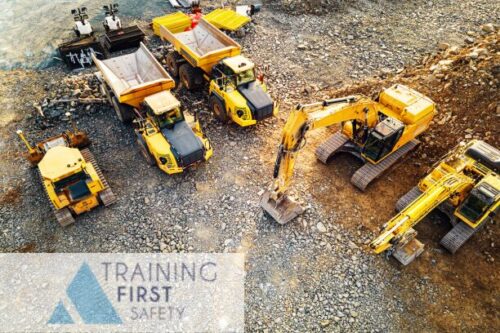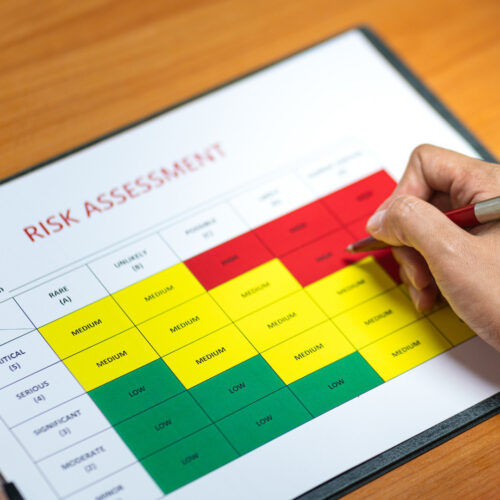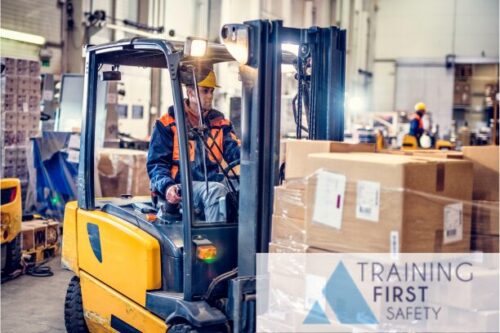- Employer’s and employee’s legal responsibilities
- Visual inspections
- Class I Tests
- Class II Tests
- Flash testing
- Hazards of incorrect testing
- Electronic tester operating techniques
- Recording results
- Labelling of equipment
-
 Course Overview This course will train delegates to carry out Portable Appliance (PAT) Testing using appropriate testing equipment. We have our own testing equipment which we train delegates to use, but delegates are also welcome to bring their own equipment with them for training if they wish. Please note that the course does not cover 3 phase equipment. Who is the course for? Anyone wishing to become an appointed person for Portable Appliance (PAT) testing within organizations using portable appliances. Course content includes:
Course Overview This course will train delegates to carry out Portable Appliance (PAT) Testing using appropriate testing equipment. We have our own testing equipment which we train delegates to use, but delegates are also welcome to bring their own equipment with them for training if they wish. Please note that the course does not cover 3 phase equipment. Who is the course for? Anyone wishing to become an appointed person for Portable Appliance (PAT) testing within organizations using portable appliances. Course content includes: -
 Course Aims To learn how to prepare for vehicle movement and guidance, communication, plant hazards and ground condition, work area layout and positioning as part of a work management traffic plan. Course Content • Explain the duties role and responsibilities and any limitations, including the procedures when ca pabilities are exceeded, of those marshalling or guiding the movement of plant and vehicles in a variety of situations. • Outline the hierarchy of control measures for plant and vehicle movement, and the requirements of a work management traffic plan. • Outline the legislative requirements and procedures relating to plant and vehicles accessing or egressing for the public highway, and the effects on other road users. • Explain types, attributes, limitations, hazards, and stability factors on a range of typical plant and work-related vehicles relevant to the occupational area or sector. • Explain the requirements of and types, functionality, advantages and limitations of a range of driv er visibility aids for a range of occupationally relevant plant and vehicles. • Explain how ground conditions and features, proximity hazards and weight limits can affect the operations of plant and vehicles for different access points and work areas. • Explain the important and locations of positions of safety for a marshaller and other personnel. • Describe and use different types of communication methods for receiving and communication ve hicle and plant movements.
Course Aims To learn how to prepare for vehicle movement and guidance, communication, plant hazards and ground condition, work area layout and positioning as part of a work management traffic plan. Course Content • Explain the duties role and responsibilities and any limitations, including the procedures when ca pabilities are exceeded, of those marshalling or guiding the movement of plant and vehicles in a variety of situations. • Outline the hierarchy of control measures for plant and vehicle movement, and the requirements of a work management traffic plan. • Outline the legislative requirements and procedures relating to plant and vehicles accessing or egressing for the public highway, and the effects on other road users. • Explain types, attributes, limitations, hazards, and stability factors on a range of typical plant and work-related vehicles relevant to the occupational area or sector. • Explain the requirements of and types, functionality, advantages and limitations of a range of driv er visibility aids for a range of occupationally relevant plant and vehicles. • Explain how ground conditions and features, proximity hazards and weight limits can affect the operations of plant and vehicles for different access points and work areas. • Explain the important and locations of positions of safety for a marshaller and other personnel. • Describe and use different types of communication methods for receiving and communication ve hicle and plant movements. -
 Course Aims To learn how to prepare for vehicle movement and guidance, communication, plant hazards and ground condition, work area layout and positioning as part of a work management traffic plan. Course Content • Explain the duties role and responsibilities and any limitations, including the procedures when ca pabilities are exceeded, of those marshalling or guiding the movement of plant and vehicles in a variety of situations. • Outline the hierarchy of control measures for plant and vehicle movement, and the requirements of a work management traffic plan. • Outline the legislative requirements and procedures relating to plant and vehicles accessing or egressing for the public highway, and the effects on other road users. • Explain types, attributes, limitations, hazards, and stability factors on a range of typical plant and work-related vehicles relevant to the occupational area or sector. • Explain the requirements of and types, functionality, advantages and limitations of a range of driv er visibility aids for a range of occupationally relevant plant and vehicles. • Explain how ground conditions and features, proximity hazards and weight limits can affect the operations of plant and vehicles for different access points and work areas. • Explain the important and locations of positions of safety for a marshaller and other personnel. • Describe and use different types of communication methods for receiving and communication ve hicle and plant movements.
Course Aims To learn how to prepare for vehicle movement and guidance, communication, plant hazards and ground condition, work area layout and positioning as part of a work management traffic plan. Course Content • Explain the duties role and responsibilities and any limitations, including the procedures when ca pabilities are exceeded, of those marshalling or guiding the movement of plant and vehicles in a variety of situations. • Outline the hierarchy of control measures for plant and vehicle movement, and the requirements of a work management traffic plan. • Outline the legislative requirements and procedures relating to plant and vehicles accessing or egressing for the public highway, and the effects on other road users. • Explain types, attributes, limitations, hazards, and stability factors on a range of typical plant and work-related vehicles relevant to the occupational area or sector. • Explain the requirements of and types, functionality, advantages and limitations of a range of driv er visibility aids for a range of occupationally relevant plant and vehicles. • Explain how ground conditions and features, proximity hazards and weight limits can affect the operations of plant and vehicles for different access points and work areas. • Explain the important and locations of positions of safety for a marshaller and other personnel. • Describe and use different types of communication methods for receiving and communication ve hicle and plant movements. -

Pre-course Requirements
Delegates must have passed the appropriate HS&E test within the last two years prior to attending this courseCourse Overview
The Ride on Roller course is delivered through a combination of classroom-based learning and practical training.Course Structure
- All pre-start, running checks and shut down procedures
- Set roller for travel
- Awareness of on-site hazards
- Set the roller for compaction duties
- Place roller in an out of service condition
- Recognise compacted/uncompacted areas
- Conditions that may cause instability of the roller
- Safety procedures when working up to unsupported edges
- Loading and unloading procedures on/off a transporter
-

Pre-course Requirements
Delegates must have passed the appropriate HS&E test within the last two years prior to attending this courseCourse Overview
The Ride on Roller course is delivered through a combination of classroom-based learning and practical training.Course Structure
- All pre-start, running checks and shut down procedures
- Set roller for travel
- Awareness of on-site hazards
- Set the roller for compaction duties
- Place roller in an out of service condition
- Recognise compacted/uncompacted areas
- Conditions that may cause instability of the roller
- Safety procedures when working up to unsupported edges
- Loading and unloading procedures on/off a transporter
-

Course Objective:
The objective of this course is to provide delegates with the knowledge and skills that will enable them to safely and competently operate Ride on Rollers on site in line with NPORS guidelines. The NPORS National Plant Operators Registration Scheme is now one of the UK’s leading CSCS affiliated carding schemes and is accepted across the Construction, Industrial, Utilities, Warehousing and Port and Marine sectors to name a few.
Course Delivery
This course will consist of a large element of practical tuition. Any delegates undertaking a novice N214 Road Roller course will also undertake theory training to prepare them for the multiple-choice assessment. All delegates are provided with and are encouraged to read Nationwide Training Provider’s NPORS study notes.
-

Course Objective:
The objective of this course is to provide delegates with the knowledge and skills that will enable them to safely and competently operate Ride on Rollers on site in line with NPORS guidelines. The NPORS National Plant Operators Registration Scheme is now one of the UK’s leading CSCS affiliated carding schemes and is accepted across the Construction, Industrial, Utilities, Warehousing and Port and Marine sectors to name a few.
Course Delivery
This course will consist of a large element of practical tuition. Any delegates undertaking a novice N214 Road Roller course will also undertake theory training to prepare them for the multiple-choice assessment. All delegates are provided with and are encouraged to read Nationwide Training Provider’s NPORS study notes.
-
 Course Overview This course trains employees in writing Risk Assessments and Method Statements, enabling them to produce these documents for their employer. Who is the course for? Anyone who needs to produce Risk Assessments and Method Statements as part of their work. Examples are managers, supervisors, health & safety representatives. Course content includes:
Course Overview This course trains employees in writing Risk Assessments and Method Statements, enabling them to produce these documents for their employer. Who is the course for? Anyone who needs to produce Risk Assessments and Method Statements as part of their work. Examples are managers, supervisors, health & safety representatives. Course content includes:- Definitions of hazard and risk
- Regulatory overview and legal duties
- Definitions
- Principles of prevention
- 5 Steps to Risk Assessment
- Quantitative and qualitative assessment
- Recording of significant findings
- Method statement development
- Effective communication
- Control systems & monitoring
-
 Course Overview This course trains employees in writing Risk Assessments and Method Statements, enabling them to produce these documents for their employer. Who is the course for? Anyone who needs to produce Risk Assessments and Method Statements as part of their work. Examples are managers, supervisors, health & safety representatives. Course content includes:
Course Overview This course trains employees in writing Risk Assessments and Method Statements, enabling them to produce these documents for their employer. Who is the course for? Anyone who needs to produce Risk Assessments and Method Statements as part of their work. Examples are managers, supervisors, health & safety representatives. Course content includes:- Definitions of hazard and risk
- Regulatory overview and legal duties
- Definitions
- Principles of prevention
- 5 Steps to Risk Assessment
- Quantitative and qualitative assessment
- Recording of significant findings
- Method statement development
- Effective communication
- Control systems & monitoring
-
 Course Overview This course trains employees in writing Risk Assessments and Method Statements, enabling them to produce these documents for their employer. Who is the course for? Anyone who needs to produce Risk Assessments and Method Statements as part of their work. Examples are managers, supervisors, health & safety representatives. Course content includes:
Course Overview This course trains employees in writing Risk Assessments and Method Statements, enabling them to produce these documents for their employer. Who is the course for? Anyone who needs to produce Risk Assessments and Method Statements as part of their work. Examples are managers, supervisors, health & safety representatives. Course content includes:- Definitions of hazard and risk
- Regulatory overview and legal duties
- Definitions
- Principles of prevention
- 5 Steps to Risk Assessment
- Quantitative and qualitative assessment
- Recording of significant findings
- Method statement development
- Effective communication
- Control systems & monitoring
-
 Course Overview This course trains employees in writing Risk Assessments and Method Statements, enabling them to produce these documents for their employer. Who is the course for? Anyone who needs to produce Risk Assessments and Method Statements as part of their work. Examples are managers, supervisors, health & safety representatives. Course content includes:
Course Overview This course trains employees in writing Risk Assessments and Method Statements, enabling them to produce these documents for their employer. Who is the course for? Anyone who needs to produce Risk Assessments and Method Statements as part of their work. Examples are managers, supervisors, health & safety representatives. Course content includes:- Definitions of hazard and risk
- Regulatory overview and legal duties
- Definitions
- Principles of prevention
- 5 Steps to Risk Assessment
- Quantitative and qualitative assessment
- Recording of significant findings
- Method statement development
- Effective communication
- Control systems & monitoring
-
 A 3 day course on counterbalance forklifts. This course is for experienced operators who have not received any previous training. Who is the course for? This course provides accredited training for operators who are experienced in driving trucks, but who have not had any previous training. Course content includes:
A 3 day course on counterbalance forklifts. This course is for experienced operators who have not received any previous training. Who is the course for? This course provides accredited training for operators who are experienced in driving trucks, but who have not had any previous training. Course content includes:- Employer's and employee's legal responsibilities
- Hazards arising from the use of fork lift trucks
- Basic maintenance
- Longitudinal and lateral stability
- Pre-use inspection
- Setup to lift various loads
- Differing terrains
- Manoeuvring in confined areas
- Keeping within safe working parameters
